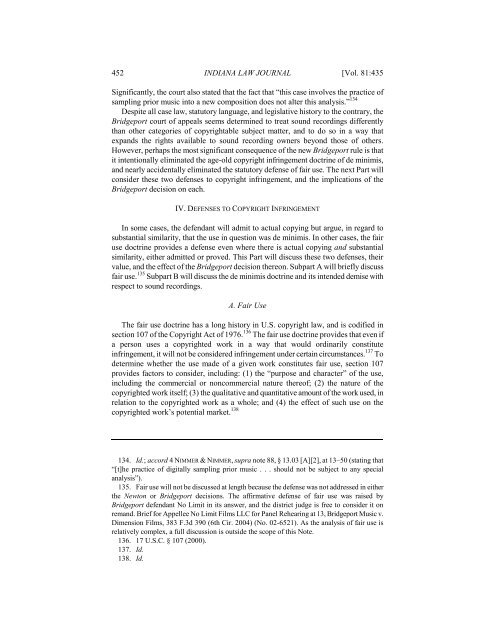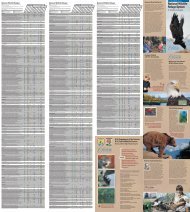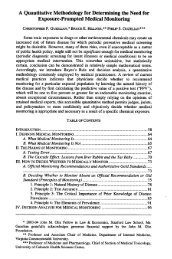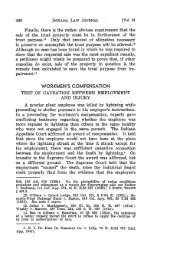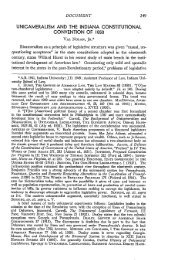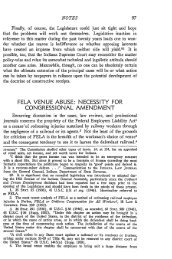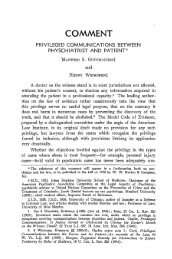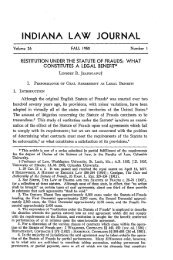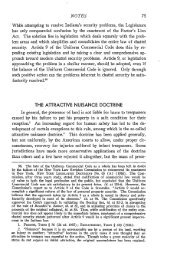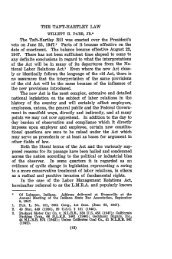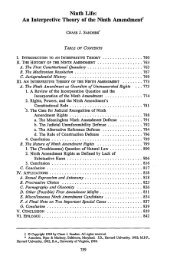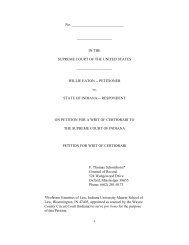Bridgeport Music v. Dimension Films - Indiana University School of ...
Bridgeport Music v. Dimension Films - Indiana University School of ...
Bridgeport Music v. Dimension Films - Indiana University School of ...
You also want an ePaper? Increase the reach of your titles
YUMPU automatically turns print PDFs into web optimized ePapers that Google loves.
452 INDIANA LAW JOURNAL [Vol. 81:435<br />
Significantly, the court also stated that the fact that “this case involves the practice <strong>of</strong><br />
sampling prior music into a new composition does not alter this analysis.” 134<br />
Despite all case law, statutory language, and legislative history to the contrary, the<br />
<strong>Bridgeport</strong> court <strong>of</strong> appeals seems determined to treat sound recordings differently<br />
than other categories <strong>of</strong> copyrightable subject matter, and to do so in a way that<br />
expands the rights available to sound recording owners beyond those <strong>of</strong> others.<br />
However, perhaps the most significant consequence <strong>of</strong> the new <strong>Bridgeport</strong> rule is that<br />
it intentionally eliminated the age-old copyright infringement doctrine <strong>of</strong> de minimis,<br />
and nearly accidentally eliminated the statutory defense <strong>of</strong> fair use. The next Part will<br />
consider these two defenses to copyright infringement, and the implications <strong>of</strong> the<br />
<strong>Bridgeport</strong> decision on each.<br />
IV. DEFENSES TO COPYRIGHT INFRINGEMENT<br />
In some cases, the defendant will admit to actual copying but argue, in regard to<br />
substantial similarity, that the use in question was de minimis. In other cases, the fair<br />
use doctrine provides a defense even where there is actual copying and substantial<br />
similarity, either admitted or proved. This Part will discuss these two defenses, their<br />
value, and the effect <strong>of</strong> the <strong>Bridgeport</strong> decision thereon. Subpart A will briefly discuss<br />
fair use. 135 Subpart B will discuss the de minimis doctrine and its intended demise with<br />
respect to sound recordings.<br />
A. Fair Use<br />
The fair use doctrine has a long history in U.S. copyright law, and is codified in<br />
section 107 <strong>of</strong> the Copyright Act <strong>of</strong> 1976. 136 The fair use doctrine provides that even if<br />
a person uses a copyrighted work in a way that would ordinarily constitute<br />
infringement, it will not be considered infringement under certain circumstances. 137 To<br />
determine whether the use made <strong>of</strong> a given work constitutes fair use, section 107<br />
provides factors to consider, including: (1) the “purpose and character” <strong>of</strong> the use,<br />
including the commercial or noncommercial nature there<strong>of</strong>; (2) the nature <strong>of</strong> the<br />
copyrighted work itself; (3) the qualitative and quantitative amount <strong>of</strong> the work used, in<br />
relation to the copyrighted work as a whole; and (4) the effect <strong>of</strong> such use on the<br />
copyrighted work’s potential market. 138<br />
134. Id.; accord 4 NIMMER & NIMMER, supra note 88, § 13.03 [A][2], at 13–50 (stating that<br />
“[t]he practice <strong>of</strong> digitally sampling prior music . . . should not be subject to any special<br />
analysis”).<br />
135. Fair use will not be discussed at length because the defense was not addressed in either<br />
the Newton or <strong>Bridgeport</strong> decisions. The affirmative defense <strong>of</strong> fair use was raised by<br />
<strong>Bridgeport</strong> defendant No Limit in its answer, and the district judge is free to consider it on<br />
remand. Brief for Appellee No Limit <strong>Films</strong> LLC for Panel Rehearing at 13, <strong>Bridgeport</strong> <strong>Music</strong> v.<br />
<strong>Dimension</strong> <strong>Films</strong>, 383 F.3d 390 (6th Cir. 2004) (No. 02-6521). As the analysis <strong>of</strong> fair use is<br />
relatively complex, a full discussion is outside the scope <strong>of</strong> this Note.<br />
136. 17 U.S.C. § 107 (2000).<br />
137. Id.<br />
138. Id.


